Paul Abbamondi's reviews and writings
Check out his own video game blog, Grinding Down.
Ni no Kuni: Wrath of the White Witch
When I first heard that Level-5 and Studio Ghibli were teaming up to make a JRPG in all sense of the acronym, I thought the following: wow, so awesome, but never gonna reach the States. But here I am, covering the first hour of Ni no Kuni: Wrath of the White Witch. Call me surprised, call me ecstatic.
To start, I am a huge fan of what both companies produce, ever since seeing Studio Ghibli’s Kiki’s Delivery Service, Howl’s Moving Castle, and Spirited Away (still haven’t seen Ponyo or Arrietty yet, wah) and losing myself in the wonder that is Miyazaki’s limitless imagination. On the flipside, Level-5 has been in my life for many years now, giving me fantastic timesinks like Dark Cloud 2, Dragon Quest VIII, Rogue Galaxy (yes, I enjoyed Rogue Galaxy, so back off), and more recently the Professor Layton puzzle games. Level-5 is great at stuffing games with things to do, and Studio Ghibli’s strength is in telling a story where rules do not apply, and together it seems like they could create something powerfully wonderful. Maybe even take over the world. I love what these companies do so much that I purposely went out and bought a PlayStation 3 to play Ni no Kuni.
With that heavy bias out of the way now, let’s see what I think of their joint concoction.
Stacking
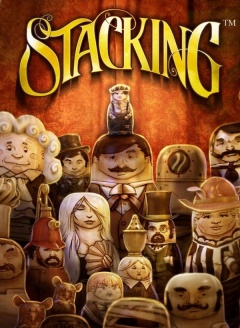 Well, this has been a long time coming.
Well, this has been a long time coming.Stacking came out for Xbox Live and PlayStation Network in early 2011, and it immediately captured my interest. With characters based on the Russian stacking matryoshka dolls and the narrative devices of silent films of yesteryears, it was definitely a unique offering, though looking over Double Fine Productions’s history it’s clear that that’s their thing. Quirky mish-mashes: RTS and musical influences for Brütal Legend, Halloween outfits and RPG elements for Costume Quest, and summer camp and psychic abilities for Psychonauts. However, I just never got around to getting it due to my severe distaste for buying Microsoft Points, since the conversion rate of USD dollars to Space Bucks never seems to be in the buyer’s favor.
Flash-forward to July 2012, and the Steam Summer Sale has now concluded. I was able to snag this bite-sized adventure for a cool couple of bucks, as well as a slew of other titles. But for now, let’s play with dolls for an hour and see how things turn out.
The Sea Will Claim Everything
 Bundle in a Box’s first bundle was adventure-themed. If you paid an astounding $100 or a trifling $1, you got the following point-and-clicky PC games: Gemini Rue, Ben There, Dan That!, Time Gentlemen, Please!, 1893: A World's Fair Mystery, and The Sea Will Claim Everything. Actually, that’s not entirely accurate, because if you beat the average price at the time you also got The Shivah from Wadjet Eye Games and Metal Dead. That’s quite a grouping and, of them, I was most excited to play The Shivah as my wife and I devoured all of Rosangela’s and Joey’s adventures in a short span of time and were eager for more from the man known as Dave Gilbert. Unfortunately, my laptop wasn’t playing nice, and so I went to the next interesting title on the list.
Bundle in a Box’s first bundle was adventure-themed. If you paid an astounding $100 or a trifling $1, you got the following point-and-clicky PC games: Gemini Rue, Ben There, Dan That!, Time Gentlemen, Please!, 1893: A World's Fair Mystery, and The Sea Will Claim Everything. Actually, that’s not entirely accurate, because if you beat the average price at the time you also got The Shivah from Wadjet Eye Games and Metal Dead. That’s quite a grouping and, of them, I was most excited to play The Shivah as my wife and I devoured all of Rosangela’s and Joey’s adventures in a short span of time and were eager for more from the man known as Dave Gilbert. Unfortunately, my laptop wasn’t playing nice, and so I went to the next interesting title on the list.The Sea Will Claim Everything is a point-and-click adventure game by Jonas and Verena Kyratzes, a husband and wife team that have made some other games set in the Lands of Dreams. This one, however, debuted to the world with this bundle. It has a really unique art style to it, akin to coloring book pages brimming with content. Other than that, I don’t know much about the plot, but I’m ready to click around.
Icewind Dale II
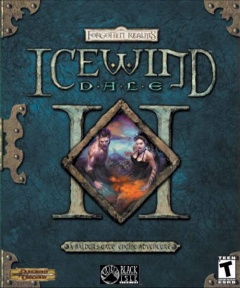 Let's start with a shocker: I've only ever played one Forgotten Realms videogame, and that first happened in 2012, the year of the dragon, the year of our collective undoing. That's right, no experience with Baldur's Gate or Neverwinter Nights whatsoever. Our paths just never crossed. However, the game that does get the glory is Dungeons & Dragons: Daggerdale, and it's fairly bland and forgettable. Since high school, I have read what some might consider maybe too many Drizzt Do'Urden books by R.A. Salvatore and am familiar with a couple of other works based around the shared universe, which I do enjoy.
Let's start with a shocker: I've only ever played one Forgotten Realms videogame, and that first happened in 2012, the year of the dragon, the year of our collective undoing. That's right, no experience with Baldur's Gate or Neverwinter Nights whatsoever. Our paths just never crossed. However, the game that does get the glory is Dungeons & Dragons: Daggerdale, and it's fairly bland and forgettable. Since high school, I have read what some might consider maybe too many Drizzt Do'Urden books by R.A. Salvatore and am familiar with a couple of other works based around the shared universe, which I do enjoy.So, when Good Old Games, a website which focuses mainly on selling old PC games, ran a “buy one Dungeons & Dragons game, get The Temple of Elemental Evil for free” I took a chance on Icewind Dale II to see what I had missed out on. Hopefully it's as exciting as those books I ate up one after the other.
Pushmo
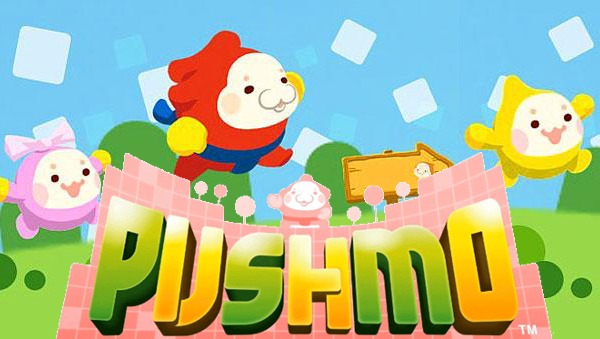 After languishing in a void of lackluster retail releases, lame battery issues, and an eShop brimming with nothing original to play, the Nintendo 3DS is starting to come around as a solid system to have and to hold. Okay, well, the battery issues still remain a problem, but whatever, at least there's befitting videogames to finally play on the dang thing. Since launching in June 2011, the system's eShop has featured 3DS Classics, such as Excitebike and TwinBee, Virtual Console re-releases, such as Kirby's Dream Land and Mario Picross, and then original 3DSWare games, such as...well, not much really. A handful of titles, but nothing too memorable.
After languishing in a void of lackluster retail releases, lame battery issues, and an eShop brimming with nothing original to play, the Nintendo 3DS is starting to come around as a solid system to have and to hold. Okay, well, the battery issues still remain a problem, but whatever, at least there's befitting videogames to finally play on the dang thing. Since launching in June 2011, the system's eShop has featured 3DS Classics, such as Excitebike and TwinBee, Virtual Console re-releases, such as Kirby's Dream Land and Mario Picross, and then original 3DSWare games, such as...well, not much really. A handful of titles, but nothing too memorable.However, word around the Interwebz is that Pushmo (called Pullbox in Europe), the newest release for 3DSWare, is pretty stellar, akin to Picross 3D in terms of its puzzles and addictive nature. Seeing as I ate up over 350 puzzles in Picross 3D, more puzzles for on the go is something I need and quickly handed over my ecash to Nintendo.
So, let's push and pull some blocks for thirty minutes and hopefully have a fantastic time.
Suikoden III
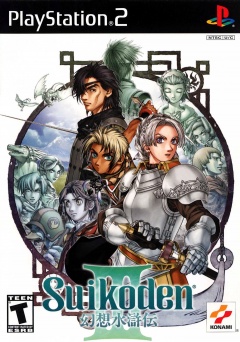 I knew that Greg Noe—the virtuoso behind The First Hour—and I would get along just fine when one of the first comments he left on my gaming blog was this: “Suikoden II... best JRPG ever made.” Yes, I totally agree. Suikoden and Suikoden II make up a pivotal part of my gaming history, and without them, I have to believe I would not be who I am today. They taught me the importance of character and characters, showed me at a young age that politics were always at war, and highlighted the importance of the invention of the elevator. Plus, they were really fun. Collecting 108 Stars of Destiny and watching a castle expand to house all of them is something I wish was in every RPG about building a rebel army these days.
I knew that Greg Noe—the virtuoso behind The First Hour—and I would get along just fine when one of the first comments he left on my gaming blog was this: “Suikoden II... best JRPG ever made.” Yes, I totally agree. Suikoden and Suikoden II make up a pivotal part of my gaming history, and without them, I have to believe I would not be who I am today. They taught me the importance of character and characters, showed me at a young age that politics were always at war, and highlighted the importance of the invention of the elevator. Plus, they were really fun. Collecting 108 Stars of Destiny and watching a castle expand to house all of them is something I wish was in every RPG about building a rebel army these days.Something happened though. Let's call it college. Four years went by, and I missed out on Suikoden III and Suikoden IV, as well as many other videogames during my time of study and refining and dropping of majors. I didn't come back to the world of videogames until after graduating and getting my first post-college job, picking up Suikoden V at first chance. Alas, by that time, it was hard to find copies of the previous two games, and only got harder with each year that passed.
Flash-forward to 2011, and I was able to find a used copy of Suikoden III recently at my local GameStop. Honestly, I've been a little scared to play it, worried that I've built up too much internal hype over the years, but destiny's calling. It's now or never.
LEGO Harry Potter: Years 5-7
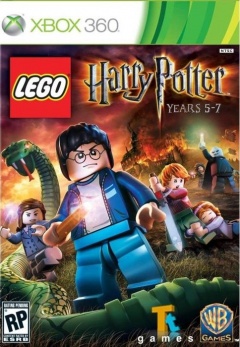 I love the LEGO videogames. I’ve said this before, and I’ll probably keep on saying it, especially if the folks over at Traveller’s Tales use their magical powers to read my mind and make LEGO Lord of the Rings or LEGO Men in Black next. My favorite of the bunch so far has been LEGO Harry Potter, Years 1-4, which managed to follow both the films and books while also giving fans a ton of love with their attention to details. It seemed perfect for LEGO-izing, with magic and a wide cast of characters, but I was disappointed that it only covered half of Harry’s legacy; the developers padded out the experience by giving players Hogwarts, a huge hub to explore that revealed more and more in a Metroidvania style after certain spells and classmates were acquired.
I love the LEGO videogames. I’ve said this before, and I’ll probably keep on saying it, especially if the folks over at Traveller’s Tales use their magical powers to read my mind and make LEGO Lord of the Rings or LEGO Men in Black next. My favorite of the bunch so far has been LEGO Harry Potter, Years 1-4, which managed to follow both the films and books while also giving fans a ton of love with their attention to details. It seemed perfect for LEGO-izing, with magic and a wide cast of characters, but I was disappointed that it only covered half of Harry’s legacy; the developers padded out the experience by giving players Hogwarts, a huge hub to explore that revealed more and more in a Metroidvania style after certain spells and classmates were acquired.J.K. Rowling finished up all the books way back in 2007, and the money-making films now dead and done until some fool tries to remake them all in like ten years. I’ve never played any of the movie tie-in videogames—though I did have fun flying on brooms and catching Golden Snitches with Harry Potter: Quidditch World Cup for the PlayStation 2—but from what I can gather, many of them are not great. Especially the Kinect ones, which tries to turn Harry into a new recruit for Gears of War. LEGO Harry Potter, Years 5-7 could very well be the last greatest game for the franchise, simply because there’s probably not much else coming out for it afterwards.
My favorite thing about the LEGO videogames are that they are perfect for playing co-op. There’s a challenge, sure, but exploring the levels and piecing everything together is more fun with a partner. Like my wife, Tara Abbamondi. Comments from her are in red!
Okay, let’s see if the first hour of LEGO Harry Potter, Years 5-7 is just as magical as the previous game’s.
Deus Ex: Human Revolution
 Evidently, I’ve been coddled by stealth-based videogames for far too long. Metal Gear Solid gives players a large radar on their HUD showcasing soldiers’ cones of vision, allowing me to know just how far they saw and when to make my move; it only jammed now and then, leaving Solid Snake feeling clothed yet naked, but otherwise the radar remained a constant and vital companion during the fall of FOXHOUND. The Tenchu franchised handed out safe rooftops like candy. The Sly Cooper games, no matter what locale, always offered a number of places to hide or grapple on or tip-toe across; it also taught me how to pickpocket with a cane. Assassin’s Creed: Brotherhood had so many ways to hide and blend in with the public that it almost seemed like the point of the game was to be a commoner and not a kick-ass, hidden blade-wielding Casanova—actually, that’s how their online multiplayer does it. Sneaking through the massive cities was never terribly tricky, and if you messed up, there always seemed to be a way to quickly erase your footprints and try again. While certainly some skill is needed, most videogames involving stealth are pretty forgiving.
Evidently, I’ve been coddled by stealth-based videogames for far too long. Metal Gear Solid gives players a large radar on their HUD showcasing soldiers’ cones of vision, allowing me to know just how far they saw and when to make my move; it only jammed now and then, leaving Solid Snake feeling clothed yet naked, but otherwise the radar remained a constant and vital companion during the fall of FOXHOUND. The Tenchu franchised handed out safe rooftops like candy. The Sly Cooper games, no matter what locale, always offered a number of places to hide or grapple on or tip-toe across; it also taught me how to pickpocket with a cane. Assassin’s Creed: Brotherhood had so many ways to hide and blend in with the public that it almost seemed like the point of the game was to be a commoner and not a kick-ass, hidden blade-wielding Casanova—actually, that’s how their online multiplayer does it. Sneaking through the massive cities was never terribly tricky, and if you messed up, there always seemed to be a way to quickly erase your footprints and try again. While certainly some skill is needed, most videogames involving stealth are pretty forgiving.But then came Deus Ex: Human Revolution, a game I tried to play stealthily, but failed miserably, eventually throwing in the towel and just shooting enemies until they breathed no more. The first hour should’ve been a clear indication of what was to come, but I’m stubborn and continued to drop Praxis point after Praxis point into perks like “see through walls” and “hack computers up to level 5.” No points were ever devoted to fixing Jensen’s shooting ability or giving him more backpack space. All I needed—or so I thought—was my tranquilizer rifle, some darts, and the smarts to crack every keypad and computer this side of future Detroit. Turns out, I needed a lot more than that.
Deus Ex: Human Revolution
 As a prequel to the original Deus Ex, which I've replayed numerous times—well, mostly that beginning level set on Liberty Island—Deus Ex: Human Revolution has a difficult task ahead of itself. It has to be more visually advanced than the 2000 offering, with updated gameplay mechanics, and yet keep things less technological in terms of story, as this is a time before JC Denton took on the Illuminati with his wild and crazy nano-augments, when augments were glorified.
As a prequel to the original Deus Ex, which I've replayed numerous times—well, mostly that beginning level set on Liberty Island—Deus Ex: Human Revolution has a difficult task ahead of itself. It has to be more visually advanced than the 2000 offering, with updated gameplay mechanics, and yet keep things less technological in terms of story, as this is a time before JC Denton took on the Illuminati with his wild and crazy nano-augments, when augments were glorified.Deus Ex is one of the earlier examples of fusing RPG elements with shooters, often allowing players to not even fire a gun so long as they upgrade their character correctly. Nowadays, with titles like Fallout: New Vegas and just about every shooter with a name implementing some kind of RPG leveling system, it's hard to say how tall Deus Ex: Human Revolution will stand.
Well, its opening hour is upon us; hope I upgraded my enjoyment augmentations enough.
Dragon Quest Monsters: Joker
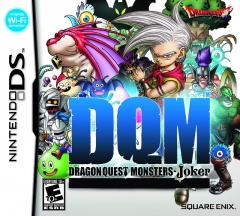 Two franchises I consider to be inherently Japanese are Dragon Quest—really, Dragon Warrior—and Pokemon, and both were born under the mighty and massive RPG tree, but have had their fair share of spin-offs. With Pokemon, its ranged from zaniness like taking pictures to brawling with other well-known gaming characters to rogue dungeon crawlers. As for Dragon Quest, they took a page out of their younger sibling's book, releasing Dragon Warrior Monsters in 1999 for the Game Boy Color; in it, a young boy is out to save his sister by collecting monsters, breeding them, and pitting them against other monsters. Pretty close to the Pokemon formula, but naturally featuring the classic monsters of the Dragon Quest franchise. Things like slimes, gremlins, and wyverns. There was more of a focus on taming monsters than simply capturing them, too. But it hooked players nonetheless.
Two franchises I consider to be inherently Japanese are Dragon Quest—really, Dragon Warrior—and Pokemon, and both were born under the mighty and massive RPG tree, but have had their fair share of spin-offs. With Pokemon, its ranged from zaniness like taking pictures to brawling with other well-known gaming characters to rogue dungeon crawlers. As for Dragon Quest, they took a page out of their younger sibling's book, releasing Dragon Warrior Monsters in 1999 for the Game Boy Color; in it, a young boy is out to save his sister by collecting monsters, breeding them, and pitting them against other monsters. Pretty close to the Pokemon formula, but naturally featuring the classic monsters of the Dragon Quest franchise. Things like slimes, gremlins, and wyverns. There was more of a focus on taming monsters than simply capturing them, too. But it hooked players nonetheless.The monster-raising series has continued on over the years, and I'm here today to give TOSE's 2007 Nintendo DS release Dragon Quest Monsters: Joker a try, a few weeks shy of the sequel's release. I have no expectations other than Pokemon mixed with my favorite classic RPG monsters, and maybe some light implementation of the DS touchscreen. And I hope the joker subtitle has nothing to do with that crazy jester from Dragon Quest VIII.
A half-hour review approaches!

